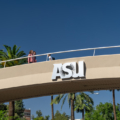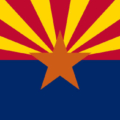As we write, the stock correction is only a tad larger than what we had in August, and sentiment is getting quite bleak, and MACD (bottom panel) looks like it wants to bottom. Our experience suggests that it is foolish to predict much at this point, and it is wiser to let the markets do the talking instead. If we hold, we hold. If we don’t, the market will likely go a bit lower. The risks for Trump are high. After touting a “golden age,” a severe recession and bear market in stocks will be fodder for Democrat attacks. Yet, given the trajectory of spending and budgets, Trump must cut back, or the nation will go bankrupt. Whether you support him or not, he has been left in a very tough situation. Most of the economic distortions and market overvaluation occurred under his predecessor. Knowing that, Trump and his team may feel it best to take the pain early in the administration, hoping things will bounce back for the mid-term elections. However, once you start to “detox”, it is hard to predict the severity of withdrawal symptoms. But still, to be healthy, we must go through the process.






















































The Real Effort to Limit the Administrative State
/by Bruce BialoskyThe government has grown out of control as new agencies are regularly birthed with little knowledge of the people funding these agencies – you. On February 19th, President Trump signed an executive order addressing this issue. The Executive Order (EO) addresses the requirements for rule-making and enforcement and requires agencies to rescind regulations that are inconsistent with laws passed by Congress. To pursue these goals, the EO requires agencies to coordinate with the Department of Government Efficiency (DOGE) and the Office of Management and Budget (OMB) by providing OMB, within 60 days, a list of such regulations. In short, this means that each cabinet department and independent agency needs to review the status of every regulation under which they operate and/or was created by that department or agency. In 2024, the FR had 96,088 pages. No one truly knows what is in there and how much is applicable or in compliance with Congressional mandates.